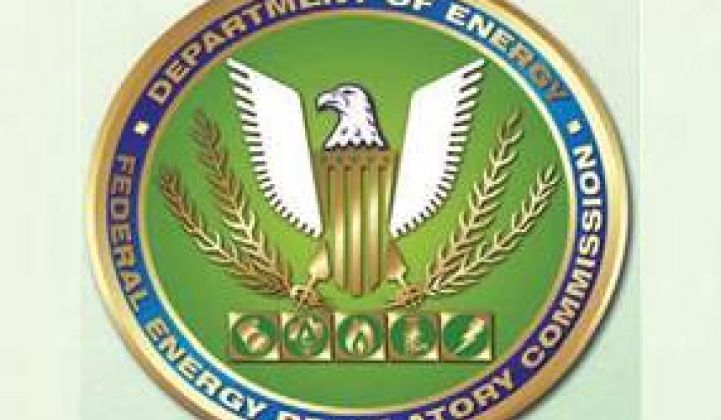A just-announced decision by federal regulators stating that all parties who benefit from new transmission in the Midwest must share in the cost of building it may go a long way toward determining the future of renewables.
The Federal Energy Regulatory Commission (FERC) decision defines MultiValue Projects (MVPs) as wires having a regional impact and wide-ranging public benefits. It approves the Midwest Independent System Operator (MISO) proposal that the cost of building or upgrading MVPs be distributed among all beneficiaries. FERC’s intent is to make the development of new regional transmission more affordable.
The decision is the culmination of a push over much of the last decade by renewables advocates in the Midwest to get utilities and transmission system planners and operators to think more about wind power but is expected to apply where new wires are built to accommodate other renewable energy resources.
"[T]he three buzz words are planning, paying and permitting,” explained Beth Soholt, Executive Director of the Midwest activist group Wind on the Wires. Over the last decade, Midwest renewables advocates did a lot of work on transmission planning for the integration of variable renewables because “the system operators and the transmission planners have had to do a lot of learning about how you do that.”
As more states instituted Renewable Electricity Standards (RES), transmission professionals realized the renewables advocates were pushing them where they needed to go. “In the Midwest,” Soholt said, “we have about 10,000 megawatts of wind in the ground and spinning. To meet our renewable requirements through 2025, we need an additional 25,000 to 30,000 megawatts.” And, she added, “we don’t know what’s going to happen with load growth.”
In the late 1990s, California developers had pioneered the idea of including the full array of stakeholders in planning to build wires for its wind-rich regions. Texas formalized the method by establishing stakeholder-approved Competitive Renewable Energy Zones (CREZs) to which developer-enabling lines would be built. Other transmission systems, including the MISO, followed.
With such planning, “we had finally gotten far enough,” Soholt said, and “the next hurdle was: How do you pay for this new transmission?”
In the wind-rich Midwest, often called “the Saudi Arabia of wind,” building new transmission is especially complicated because the MISO territory is spread from eastern Montana to northern Ohio, as well as north to Saskatchewan and south to Missouri and Kentucky.
What all proposed transmission to facilitate renewable development shared, Soholt explained, was incorporated into the idea of a regional, 345-kilovolt (or larger) MVP. It would enable public policy objectives, serve local load growth, reliably keep the lights on, and assure the best-priced electricity to ratepayers by reducing transmission congestion.
The MISO submitted to FERC the idea of establishing 100% cost sharing among all stakeholders for such MVPs. “FERC largely found that what MISO had proposed was just and reasonable,” Soholt said. “The job creation, the economic development, the wind farms in lots of different locations and all the associated additional benefits,” Soholt said, flow to electricity consumers in states throughout the region.
“The reason this is so precedential,” Soholt said, is that “until we had an idea of how FERC was going the treat the cost allocation,” none of the transmission planned over the last five years could move forward. “There was too much money at stake that utilities didn’t know how would be allocated or recovered.” But, with this decision, “now we can move into implementation.”
Seventeen projects are listed in the FERC filing. “All of those lines are going to get more scrutiny now,” Soholt said. “What you’ll see next is utilities or other transmission developers stepping up to make the business case.”
Among the projects most likely to be quickly affected, Soholt said, are (1) the Michigan thumb project, (2) the Brookings line to deliver power from South Dakota to Minneapolis-St. Paul, and (3) the La Cross to Madison line enhancing Wisconsin’s ability to access Dakota and Iowa wind.
The next debate, Soholt said, will be over interconnection. According to the FERC decision, developers will still have to pay 90% of that cost. “There will be an ongoing war over what an individual wind farm should pay,” she said, “and what should be spread more broadly across the footprint because it brings multiple benefits.”
The next challenge that FERC (and Congress) will need to confront is permitting (that third buzzword). “Will we get to a logjam at the state level?” Soholt asked. And does FERC have the jurisdiction to step in? “It’s not clear to me that FERC has that ability,” she said. It may be necessary “to go back to Congress and say, ‘OK, we really need this piece because the states are stuck.’”
Some renewables advocates are uncomfortable with the large-scale development of new transmission in a region long dominated by fossil fuel interests. But “transmission doesn’t happen in a vacuum,” Soholt said. “The economics of running a coal plant are getting more difficult” and “we need transmission to facilitate the delivery of clean energy.”
While “a whole lot things are creating a perfect storm to retire the next tranche of coal plants,” it is true that the possibility of using the new transmission to deliver coal-generated electricity does exist, but “we’ve got a pretty savvy bunch of groups working on these issues,” Soholt said, and “before any additional new coal gets allowed to move forward, there’s going to be a big battle.”



